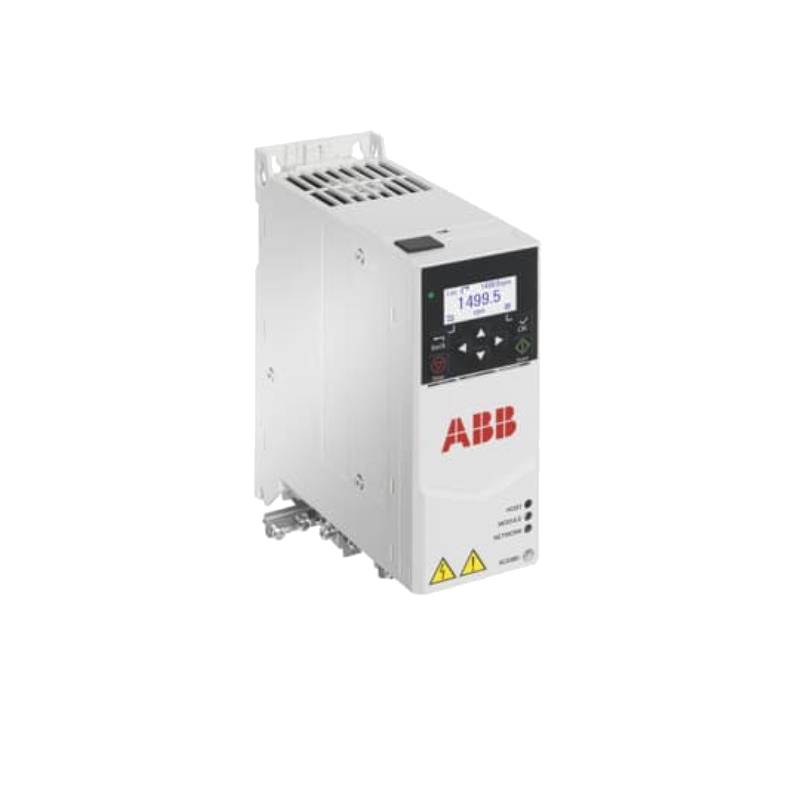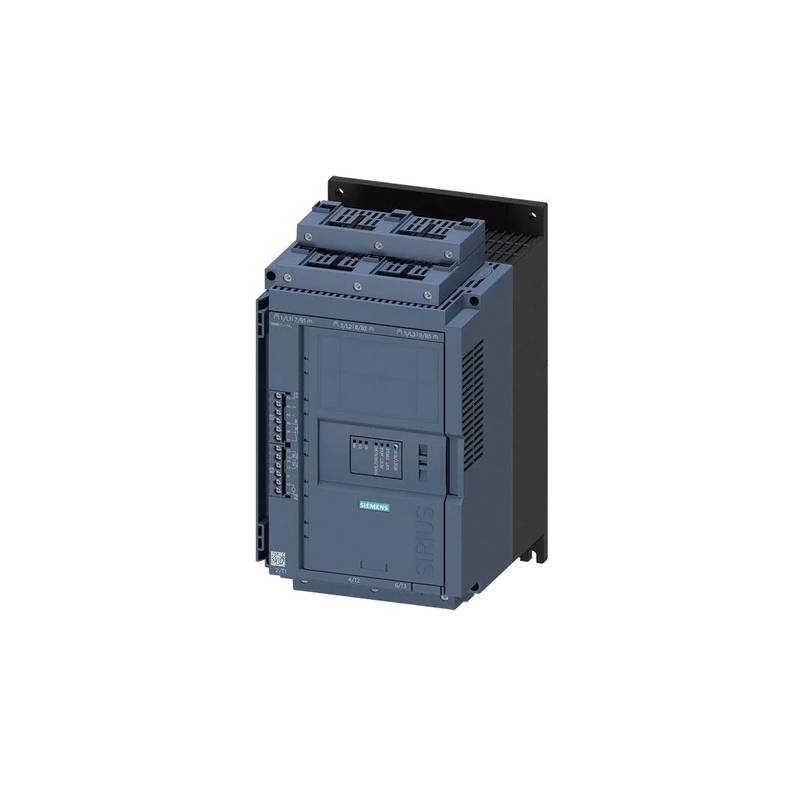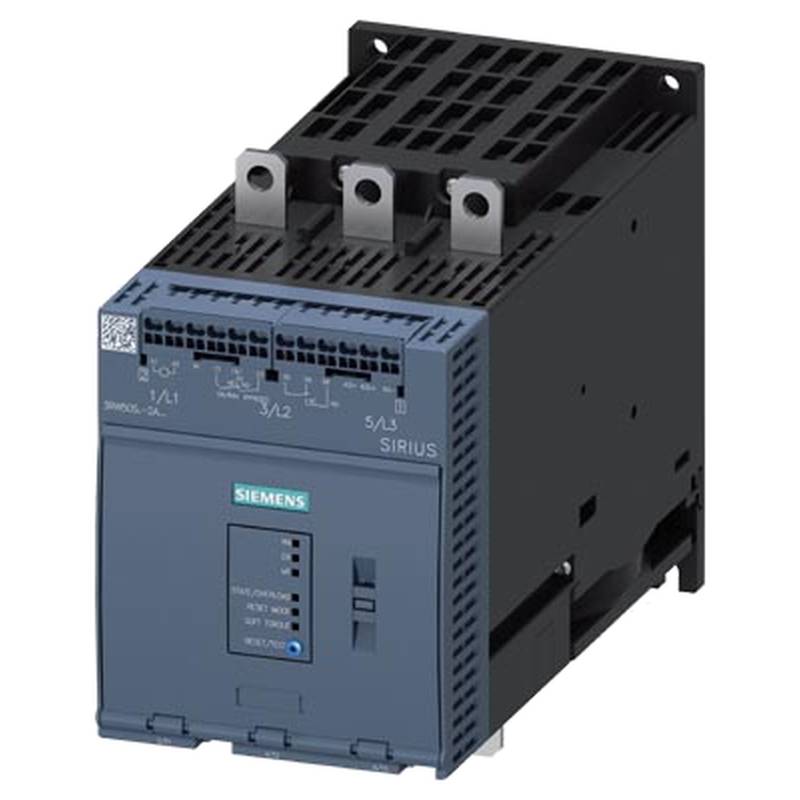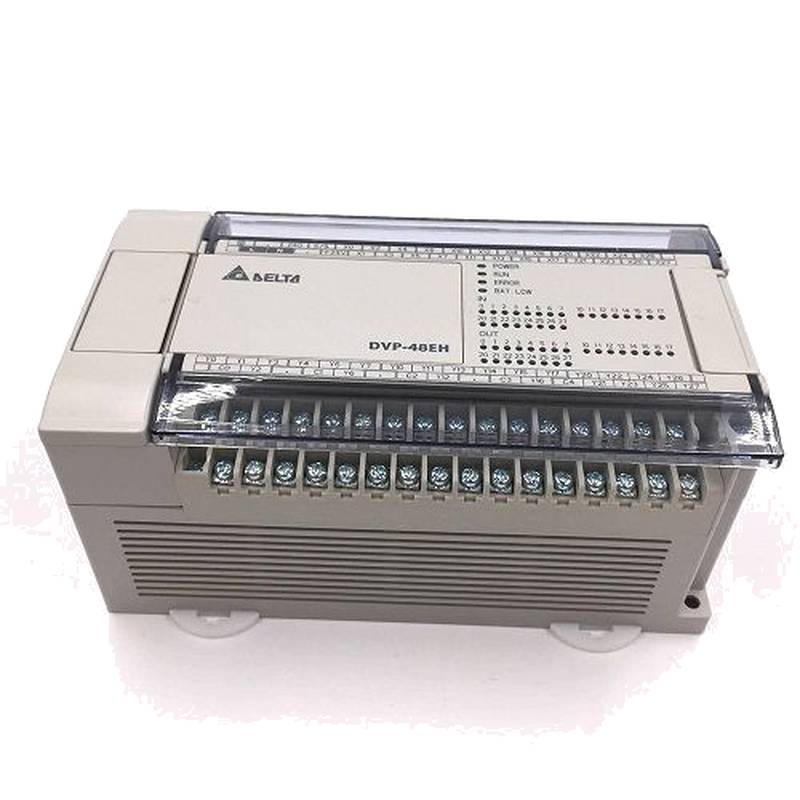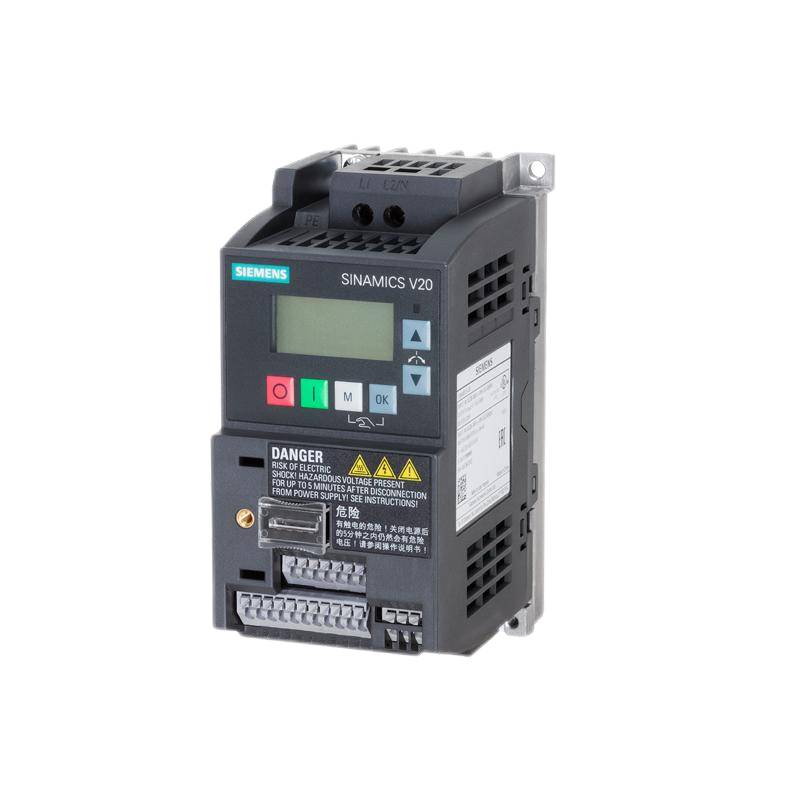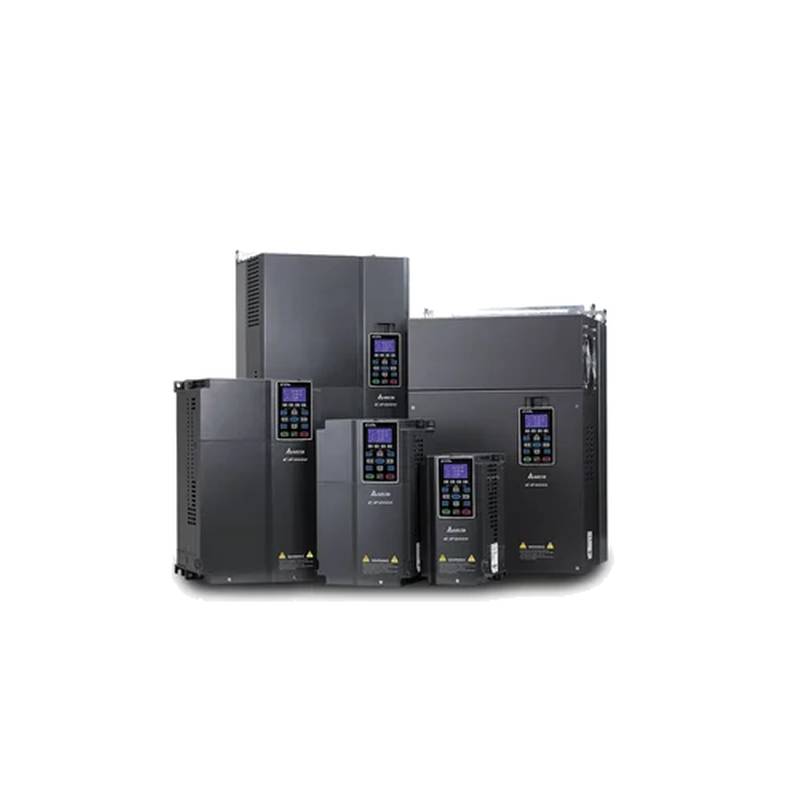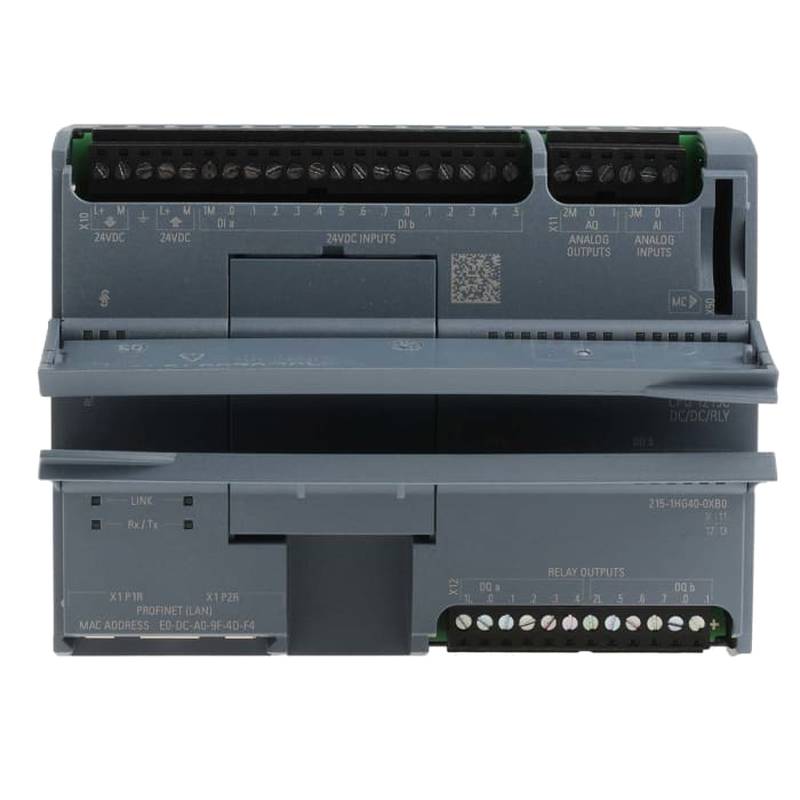
The SIMPHOENIX DX100-4T0011B Universal VFD Frequency Converter, a robust 1.1kW solution, offers advanced motor control for a wide spectrum of industrial applications. This drive excels in delivering precise speed regulation, enhanced energy efficiency, and reliable performance, making it an indispensable component for modern automation systems. Its core advantages lie in its compact design, user-friendly interface, and superior overload capacity, ensuring seamless integration and sustained operation even under demanding conditions. Key technical specifications include an input voltage range of 3-Phase, 380-440V AC, an output voltage of 3-Phase, 380-440V AC, and a rated power of 1.1kW (1.5HP). It features a maximum output frequency of 400Hz and an IP20 protection rating, suitable for clean industrial environments.
Core Features & Market Positioning
The SIMPHOENIX DX100-4T0011B distinguishes itself through its intelligent control algorithms, offering both V/f control and advanced Vector Control (SVC) for optimized torque and speed performance. Its built-in EMI filter minimizes electromagnetic interference, ensuring compatibility with sensitive equipment. The drive's robust thermal management system, featuring a high-efficiency heatsink, guarantees stable operation during extended use. Positioned as a versatile and cost-effective solution, the DX100-4T0011B competes effectively in the mid-range VFD market, appealing to businesses seeking reliable motor control without compromising on advanced features. Its intuitive parameter settings and diagnostic capabilities further enhance its market appeal by simplifying setup and maintenance for industrial end-users.
Key Application Scenarios
This universal VFD frequency converter finds extensive application across various industries. It is ideal for controlling pumps and fans in HVAC systems, providing precise flow and pressure management while optimizing energy consumption. In the manufacturing sector, the SIMPHOENIX DX100-4T0011B is employed in conveyor systems, machine tools, and packaging machinery, where accurate speed control is critical for production efficiency and product quality. Textile machinery, woodworking equipment, and plastic extrusion lines also benefit from the drive's consistent performance and ability to handle varying load demands. Its adaptability makes it a go-to choice for applications requiring smooth acceleration and deceleration, reducing mechanical stress on connected equipment.
Practical System Integration Guidance
Integrating the SIMPHOENIX DX100-4T0011B into existing systems is straightforward, thanks to its standardized mounting dimensions and clear terminal designations. Ensure a stable 3-phase power supply within the specified voltage range (380-440V AC) is connected to terminals L1, L2, and L3. The motor is connected to terminals T1, T2, and T3. For control signals, utilize the digital inputs (DI) for start/stop commands, forward/reverse selection, and fault resets. Analog inputs (AI) can be configured for speed reference signals from potentiometers or PLC outputs. Grounding is paramount; ensure proper earthing of both the VFD and the motor to prevent electrical hazards and ensure optimal performance. Refer to the official manual for detailed wiring diagrams and recommended cable types for power and control circuits.
Commissioning the DX100-4T0011B involves a systematic parameter configuration process. Begin by setting basic motor parameters such as rated voltage, frequency, current, and pole numbers to match the connected motor. For applications requiring precise speed regulation, enable and configure the Sensorless Vector Control (SVC) mode. Adjust acceleration and deceleration times to suit the application's load dynamics, preventing mechanical shock. Limit settings, such as overcurrent and overvoltage protection, should be set slightly above the expected operational limits to ensure safety without causing nuisance tripping. Thoroughly test the drive's operation across its speed range, monitoring motor temperature and performance under varying load conditions before putting it into full production service.
Programming examples for common scenarios can significantly simplify setup. For a simple start/stop function with speed control via an analog input, configure DI1 for forward run command and AI1 for speed reference (e.g., 0-10V or 4-20mA). Set the VFD's operating mode to external control and the speed reference source to the analog input. Advanced programming might involve using the VFD's internal PLC functionality for multi-step speed control or integrated timing sequences, eliminating the need for an external controller in simpler automation tasks. Always consult the SIMPHOENIX programming manual for specific parameter codes and logical configurations relevant to your application's requirements.
Operation and Risk Mitigation
Safe operation of the SIMPHOENIX DX100-4T0011B mandates adherence to electrical safety standards and manufacturer guidelines. Always ensure the power supply is de-energized and locked out before performing any wiring or maintenance. The drive generates high voltages, and residual charge can remain even after power disconnection; allow for a sufficient discharge time as specified in the manual. Proper ventilation is crucial to prevent overheating; ensure adequate clearance around the unit and avoid installation in dusty or corrosive environments, which can degrade internal components and pose a risk. Regularly inspect wiring connections for signs of wear or damage and perform periodic functional tests.
Common troubleshooting scenarios often involve fault code diagnosis. For instance, an "Overcurrent Fault" (e.g., F001) might indicate an undersized VFD for the load, incorrect motor parameters, or a short circuit. An "Overvoltage Fault" (e.g., F002) could suggest excessive regenerative energy from the motor or a line voltage issue. "Overheating Fault" (e.g., F003) usually points to inadequate cooling, high ambient temperature, or a malfunctioning fan. Understanding the basic fault codes and their probable causes allows for prompt identification and resolution of issues, minimizing downtime. Always refer to the fault code table in the product manual for detailed explanations and corrective actions.
Risk mitigation also involves proper parameter management and access control. Setting password protection for critical parameters prevents unauthorized changes that could lead to unsafe operation or equipment damage. Regularly backing up VFD parameter settings, either through the keypad or communication interfaces, is crucial for rapid recovery in case of a drive failure or reset. Implementing proper motor thermal protection, either through the VFD's internal functions or external devices, safeguards the motor from damage due to sustained overload conditions. Adhering to these operational and preventative measures ensures both personnel safety and the longevity of the drive and connected machinery.
Scalability & Long-Term Value
The SIMPHOENIX DX100-4T0011B offers inherent scalability through its communication capabilities. Integration with industrial networks like Modbus RTU via an optional communication module allows for seamless connection to PLCs, HMIs, and SCADA systems. This enables centralized monitoring, control, and data acquisition, forming the foundation for smart manufacturing and IIoT initiatives. The drive's ability to be programmed for various control strategies and its compatibility with a wide range of motor types mean that as automation requirements evolve, the DX100-4T0011B can often be reconfigured and adapted rather than requiring complete replacement.
Its robust construction and high-quality components contribute significantly to its long-term value. Designed for industrial environments, it provides reliable performance over an extended operational life, reducing the total cost of ownership. Compatibility with standard electrical infrastructure and ease of maintenance further enhance its economic appeal. The SIMPHOENIX ecosystem also often provides firmware updates and technical support, ensuring that the drive remains a relevant and supported component within evolving automation landscapes. This foresight in design and support minimizes obsolescence risks and maximizes the return on investment for end-users.
For expanding operations, multiple DX100-4T0011B units can be deployed in parallel, managed by a central control system. The drive's flexibility allows it to be adapted for different motor sizes and power requirements within its class, providing a consistent control platform across various machines. Furthermore, as industries move towards digitalization and Industry 4.0, the DX100-4T0011B's communication features position it as a key enabler for data-driven optimization and predictive maintenance strategies, ensuring it remains a valuable asset in sophisticated automation architectures.
Frequently Asked Questions
What is the power rating of the SIMPHOENIX DX100-4T0011B?
This VFD has a rated power of 1.1kW, equivalent to approximately 1.5 horsepower. This output power is suitable for a wide range of medium-duty industrial machinery and motor applications.
What input voltage does the DX100-4T0011B require?
The converter operates on a 3-phase AC input voltage range of 380 to 440 Volts. Ensure your power supply conforms to this specification for optimal performance and safety.
Can this VFD control motors with variable speed?
Yes, it is designed for precise variable speed control of AC induction motors using advanced algorithms like V/f and Sensorless Vector Control. This allows for smooth operation and energy savings.
What type of motor control does the SIMPHOENIX DX100-4T0011B support?
It supports both V/f (Volts per Hertz) control for simpler applications and Sensorless Vector Control (SVC) for enhanced torque and speed precision. SVC is ideal for dynamic loads.
Is this VFD suitable for harsh industrial environments?
The DX100-4T0011B has an IP20 protection rating, meaning it is suitable for clean, dry indoor industrial environments protected from direct contact. It requires enclosure in dusty or wet conditions.
How is the SIMPHOENIX DX100-4T0011B installed?
Installation involves mounting the unit securely, connecting the 3-phase input power, output to the motor, and any necessary control signals. Proper grounding is essential for safety and performance.
What are the main advantages of using this VFD?
Key advantages include energy savings through speed optimization, improved process control, reduced mechanical stress on equipment, enhanced motor protection features, and a compact, user-friendly design.
Does the DX100-4T0011B offer communication capabilities?
Yes, it supports communication protocols like Modbus RTU, often via an optional communication module. This enables integration into larger automation systems and remote monitoring.
What safety features are included in this VFD?
It incorporates essential safety features such as overcurrent, overvoltage, undervoltage, overheating, and short-circuit protection. These safeguard both the VFD and the connected motor.
How can I program the SIMPHOENIX DX100-4T0011B for specific applications?
Programming is done via the VFD's keypad interface or through communication software. Parameters can be adjusted for motor characteristics, speed profiles, acceleration/deceleration times, and control modes.


















